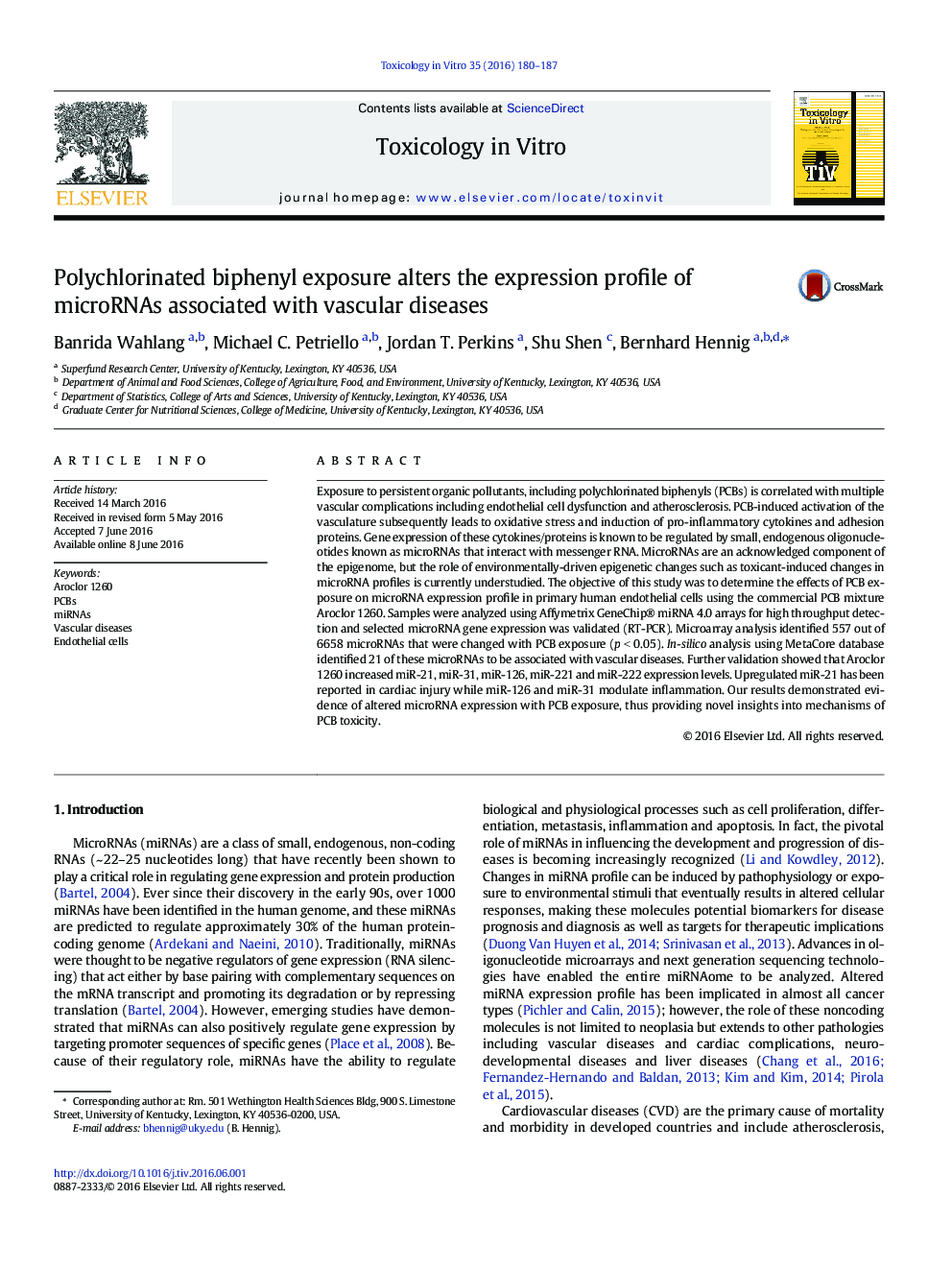| Article ID | Journal | Published Year | Pages | File Type |
|---|---|---|---|---|
| 5861060 | Toxicology in Vitro | 2016 | 8 Pages |
â¢The PCB mixture, Aroclor 1260 induced changes in microRNA expression profile in human umbilical vein endothelial cells.â¢Microarray analysis identified 557 out of 6658 microRNAs that were changed with PCB exposure.â¢In-silico analysis using MetaCore database identified 21 of these microRNAs to be associated with vascular diseases.â¢Further validation showed increased miR-21, miR-31, miR-126, miR-221 and miR-222 expression levels with PCB exposure.
Exposure to persistent organic pollutants, including polychlorinated biphenyls (PCBs) is correlated with multiple vascular complications including endothelial cell dysfunction and atherosclerosis. PCB-induced activation of the vasculature subsequently leads to oxidative stress and induction of pro-inflammatory cytokines and adhesion proteins. Gene expression of these cytokines/proteins is known to be regulated by small, endogenous oligonucleotides known as microRNAs that interact with messenger RNA. MicroRNAs are an acknowledged component of the epigenome, but the role of environmentally-driven epigenetic changes such as toxicant-induced changes in microRNA profiles is currently understudied. The objective of this study was to determine the effects of PCB exposure on microRNA expression profile in primary human endothelial cells using the commercial PCB mixture Aroclor 1260. Samples were analyzed using Affymetrix GeneChip® miRNA 4.0 arrays for high throughput detection and selected microRNA gene expression was validated (RT-PCR). Microarray analysis identified 557 out of 6658 microRNAs that were changed with PCB exposure (p < 0.05). In-silico analysis using MetaCore database identified 21 of these microRNAs to be associated with vascular diseases. Further validation showed that Aroclor 1260 increased miR-21, miR-31, miR-126, miR-221 and miR-222 expression levels. Upregulated miR-21 has been reported in cardiac injury while miR-126 and miR-31 modulate inflammation. Our results demonstrated evidence of altered microRNA expression with PCB exposure, thus providing novel insights into mechanisms of PCB toxicity.
Graphical abstractDownload high-res image (145KB)Download full-size image
